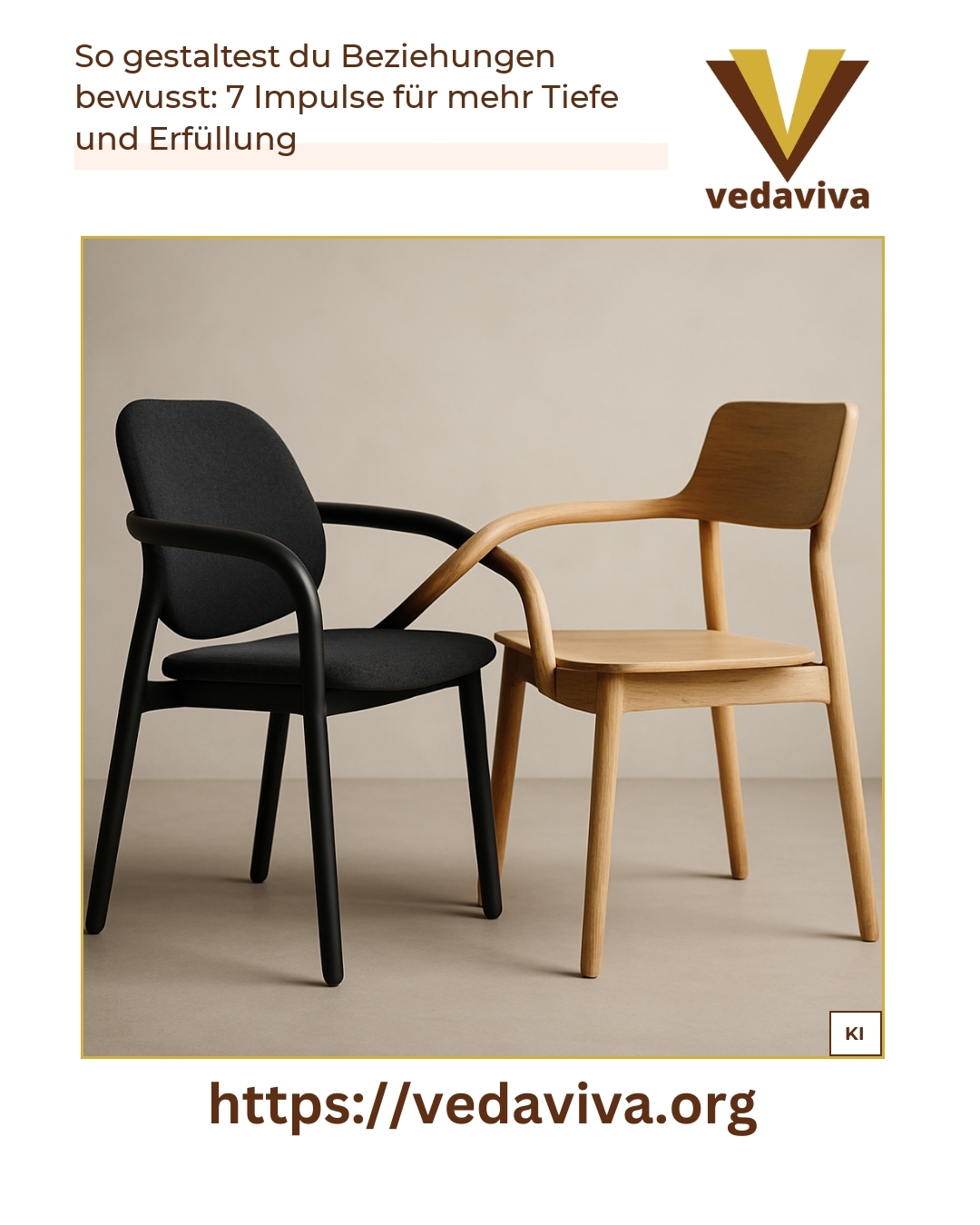Relationship design as the conscious creation of closeness and connection
Relationship design means actively shaping relationships with awareness. The focus here is not on coincidence or habit, but on consciously recognising and managing dynamics, values and needs. Many people want authentic and deep connections that offer space for growth and mutual respect. Relationship design helps to make precisely such relationships possible.
In practice, it is clear that conscious organisation makes all the difference. The relationship level, i.e. emotional and respectful communication between people, is cultivated in a targeted manner. This creates a deeper understanding that goes far beyond factual discussions and enriches the interaction in the long term[1].
Impulses for more depth and fulfilment in relationship design
Impulse 1: Use emotions and desires as a treasure chest
In relationship design, consciously dealing with emotions is key. Behind every emotion are hidden longings and desires that are worth discovering. Those who open up to these inner levels not only bring more authenticity to the relationship, but also experience more intense closeness.
BEST PRACTICE at company XYZ (name changed due to NDA contract) In workshops, the importance of emotions is addressed in order to strengthen mutual understanding. Participants learn to consciously recognise their own feelings and communicate them in an appreciative manner, which improves cooperation and the climate in the team in the long term.
Impulse 2: Promoting a change of perspective
A different perspective opens up new avenues in relationship design. People often judge the other person from their own perspective, which makes it difficult to recognise the essence of the other person. Acceptance and appreciation in all their facets are therefore important. Consciously letting go of expectations enables deeper encounters.
BEST PRACTICE at company XYZ In a team development process, participants are instructed to take on the other person's point of view through exercises. This conscious empathy changes communication and conflict resolution in a positive way, creating a sustainable culture of trust.
Impulse 3: Actively shaping the relationship level
The relationship level plays a central role in relationship design. This is where feelings, respect and appreciation are communicated - also non-verbally. Those who are aware of this level and actively cultivate it lay the foundation for harmonious cooperation and productive collaboration[1].
BEST PRACTICE at company XYZ Managers receive special training in order to specifically recognise and positively influence the relationship level. This not only improves employee satisfaction, but also contributes to motivation and creativity within the team.
Impulse 4: Take personal responsibility
Relationship design works particularly well when everyone involved takes responsibility for their own issues. Reflecting and acting on emotions and needs without apportioning blame ensures a balanced relationship on an equal footing[5].
BEST PRACTICE at company XYZ One company integrated regular feedback and reflection sessions into its culture. Employees learn to take responsibility for their own role in relationships, which improves collaboration in the long term.
Impulse 5: Establish regular communication times
Consciously scheduling times for in-depth conversations is an important building block in relationship design. Whether in a professional or private context - fixed times for dialogue promote clarity, understanding and closeness[5].
Impulse 6: Understanding and accepting motives and needs
A motive-orientated relationship design takes into account basic needs such as attachment, orientation or self-esteem enhancement. A sensitively harmonised relationship design is oriented towards this in order to promote connections that are experienced as stable and enriching[4].
Impulse 7: Use the relationship as a mirror
Every relationship reflects patterns and desires. This awareness can be used specifically to better understand oneself and others and to encounter them in depth. This is a valuable resource in relationship design[2].
Relationship design in practice - examples and experiences
In practice, companies and individuals show how conscious relationship work works. Whether teams, managers or individuals - focussing on the relationship level, personal responsibility and open communication ensures satisfaction and sustainable success.
An illustrative example is the regular introduction of exchange formats that make the relationship level in organisations visible and appreciative. This increases mutual understanding and measurably improves collaboration.
Another experience is that a change of perspective and acceptance reduces resistance in communication. Shaping relationships thus becomes a conscious process that enables more depth and fulfilment.
In addition, training in relationship skills for managers promotes a more constructive working atmosphere and creates space for innovation. This awareness of relationship design has a long-term positive effect on the entire working environment.
My analysis
Relationship design is not magic, but a conscious practice. Impulses such as recognising emotions, changing perspective, taking responsibility for oneself and regular communication lead to deeper and more fulfilling relationships. Consciously working on the relationship level strengthens trust and appreciation, which are fundamental to any partnership or collaboration. Those who take these impulses seriously will often report how lively, supportive relationships develop.
Further links from the text above:
[1] Understanding the relationship level and the factual level
[2] 7 impulses for your relationships
[4] Motive-orientated relationship design
[5] Relationships at eye level: 17 impulses for a lively partnership
Legal notice: Coaching does not replace therapy. It serves personal development. I do not diagnose or promise a cure. My offer is for personal development and is not a substitute for medical, psychotherapeutic or curative treatment. Please consult a medically qualified specialist if you have any health complaints. The experiences described here are based on individual feedback from my clients. They are not a guarantee of success and do not replace medical or therapeutic counselling. For more information and if you have any questions, please contact How to consciously shape relationships: 7 impulses for more depth and fulfilment or read more blog posts on the topic Relationship design here.













